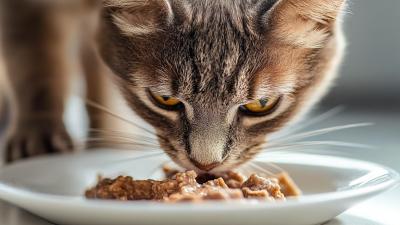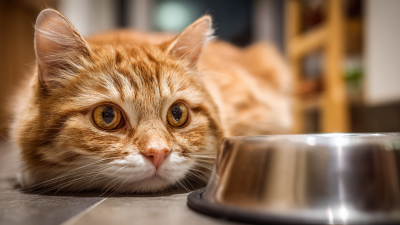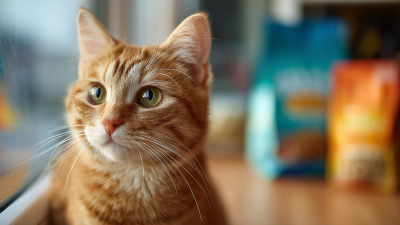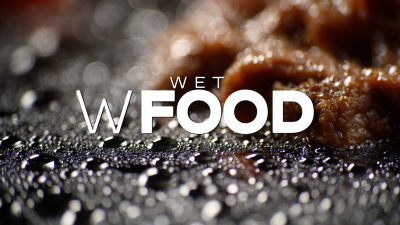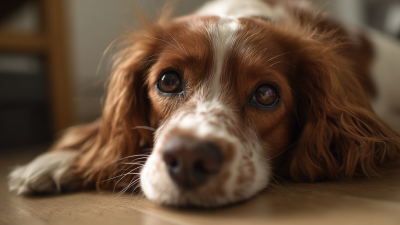Feeding your feline friend is not just about filling their bowl; it’s about providing them with the right nutrition to ensure their optimal health and happiness. One increasingly popular choice among cat owners is "Kitty Wet Food," which offers a variety of benefits that can significantly enhance your cat's diet. In this comprehensive guide, we will explore the top five advantages of incorporating wet food into your cat's daily meals, shedding light on why it may be the ideal option for both their physical and emotional well-being.

Kitty Wet Food is renowned for its higher moisture content, which can help keep your cat well-hydrated, especially vital for those prone to urinary issues. Furthermore, the palatability of wet food often entices even the pickiest eaters, ensuring they receive the essential nutrients they need. We will also discuss how transitioning to wet food can aid in maintaining a healthy weight and support dental health, making it a versatile choice for various life stages. Join us as we delve deeper into each benefit and discover how Kitty Wet Food can be a game-changer in your cat's diet.
Feeding your cat wet food comes with numerous benefits, particularly when it comes to hydration. Cats are notoriously low drinkers, relying on their food to meet their water needs. Wet food typically contains around 70-80% moisture, making it an excellent choice for keeping your feline friend hydrated. Proper hydration is essential for maintaining your cat's kidney function and overall health, helping to prevent urinary tract issues and other complications.
To maximize the hydration benefits, consider integrating wet food into your cat's diet gradually. Start by mixing a small amount of wet food with their dry kibble, and gradually increase the ratio over time. This approach not only helps with hydration but also makes the transition smoother for your cat. Additionally, some cats are more inclined to drink water if they have access to clean, fresh bowls placed around the house, or even a cat fountain to attract them.
When selecting wet food, look for high-quality options that are rich in protein and low in fillers. It’s essential to read the labels carefully and choose formulas that contain real meat as the primary ingredient, ensuring your cat receives not only the hydration benefits but also vital nutrients. Making wet food a staple in your cat's diet can promote healthier hydration habits, leading to a happier and more vibrant life.
When it comes to feline nutrition, the debate between wet and dry cat food has been a longstanding one. A significant advantage of feeding cats wet food is its enhanced nutritional value. According to the Journal of Nutrition, wet cat food generally contains higher levels of protein and lower carbohydrates compared to dry kibble. This is particularly important for maintaining a healthy weight and preventing obesity, which affects approximately 60% of pet cats in the United States, as reported by the Association for Pet Obesity Prevention.
Moreover, wet food provides essential hydration. Cats are known for their low thirst drive, often obtaining most of their water intake from food rather than drinking from a bowl. The Cat Fanciers' Association highlights that increasing moisture in a cat's diet reduces the risk of urinary tract diseases, which are prevalent in felines. With up to 78% water content, wet food significantly contributes to a cat's daily hydration needs, helping to support kidney health and overall well-being. This added benefit makes wet food not just a tasty option but a crucial component of a balanced diet for your feline friend.
This chart illustrates the top 5 benefits of feeding your cat wet food, highlighting the advantages of each aspect, such as enhanced hydration and nutritional value. The data points reflect the importance of wet food in terms of overall cat health.
Feeding your cat wet food rather than dry kibble can significantly enhance their digestive health. Cats are obligate carnivores, and their bodies thrive on high moisture diets, which wet food provides. According to a study published in the Journal of Feline Medicine and Surgery, cats that consume wet food have been shown to have improved hydration levels, which directly correlates with better gastrointestinal function. Increased fluid intake helps in the prevention of urinary tract issues and supports overall metabolic health, making wet food a preferable option for many feline companions.
Moreover, wet food is often easier for cats to digest than dry food. It is typically higher in protein and lower in carbohydrates. Research conducted by the American Animal Hospital Association highlights that diets rich in protein can lead to enhanced digestion and increased gut health stability in cats. This aspect is crucial for busy pet owners who may not have time for multiple vet visits due to digestive issues arising from a less suitable diet. By choosing wet food, pet owners can help ensure their cats maintain optimal gastrointestinal health, leading to happier, healthier lives for their furry friends.
Wet food is often favored by cats for several reasons, primarily due to its palatability. Studies show that cats are more inclined to choose wet food over dry options, with a survey by the Pet Food Institute revealing that nearly 80% of cat owners report their pets preferring the taste and texture of wet food. This preference is not just a matter of taste; the higher moisture content in wet food contributes to its appealing smell and flavor, which are essential factors for a cat's eating habits. Cats are obligate carnivores, and their natural diet consists primarily of high-moisture prey, making wet food a more instinctive choice for many felines.
In addition to palatability, wet food's impact on hydration cannot be overstated. According to the Journal of Veterinary Internal Medicine, around 50% of cats are chronically dehydrated, which can lead to serious health issues like urinary tract problems and kidney disease. Feeding wet food provides a significant hydration boost, as it contains approximately 75-80% water. This higher fluid intake helps maintain healthy kidney function and reduces the risk of urinary issues, making wet food not only a delicious option but a crucial one for a cat's overall well-being.
Feeding your cat wet food can significantly contribute to weight management, an essential aspect of maintaining their overall health. Research indicates that cats fed a diet high in moisture, such as wet food, are more likely to maintain a healthy weight compared to those on a dry kibble diet. According to a study published in the Journal of Feline Medicine and Surgery, cats that were offered wet food had lower caloric intake and showed a decreased likelihood of obesity, which is a growing concern in pet health. With around 60% of cats in the United States classified as overweight or obese, finding solutions to promote a balanced diet is crucial.
Wet food not only provides hydration but also encourages regular eating habits, which is vital for managing a cat's weight. The Association for Pet Obesity Prevention highlights that the moisture content in wet food can help cats feel full with fewer calories, reducing the temptation to overeat. Moreover, the higher protein content found in many wet food formulations supports lean muscle mass while aiding in fat loss. By incorporating wet food into your cat's diet, you can help promote a healthier lifestyle and prevent obesity-related health issues, ensuring your feline friend lives a long, active life.
